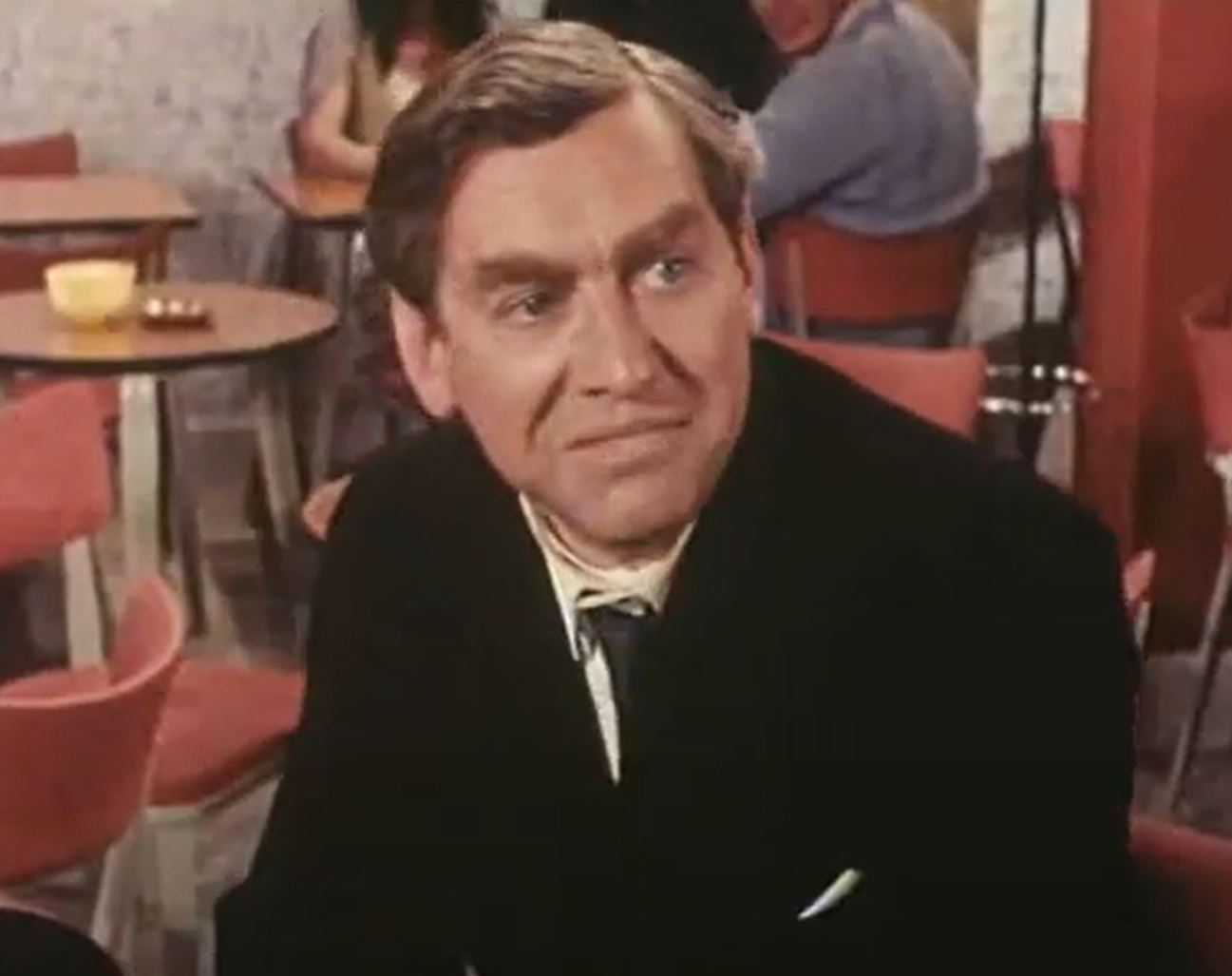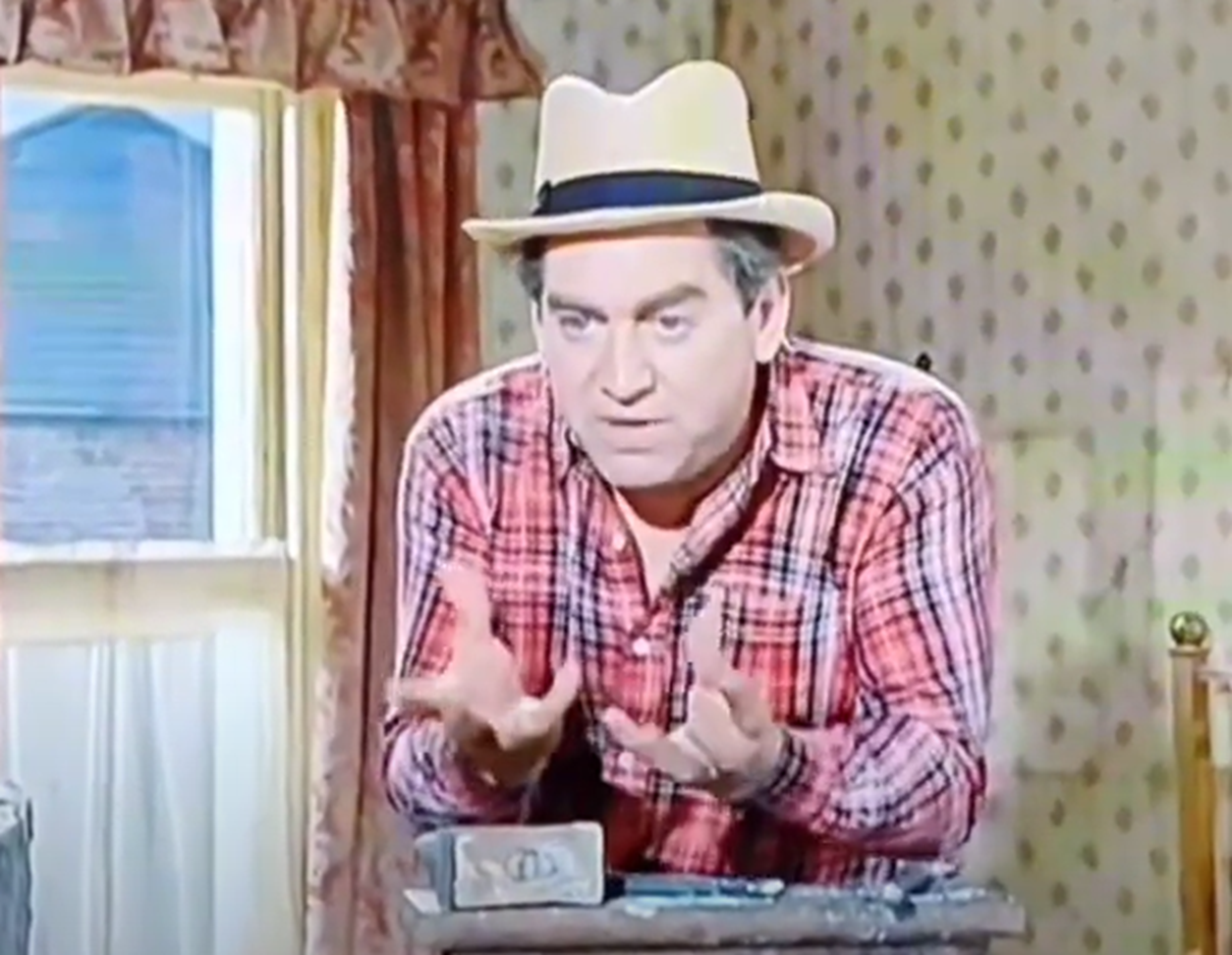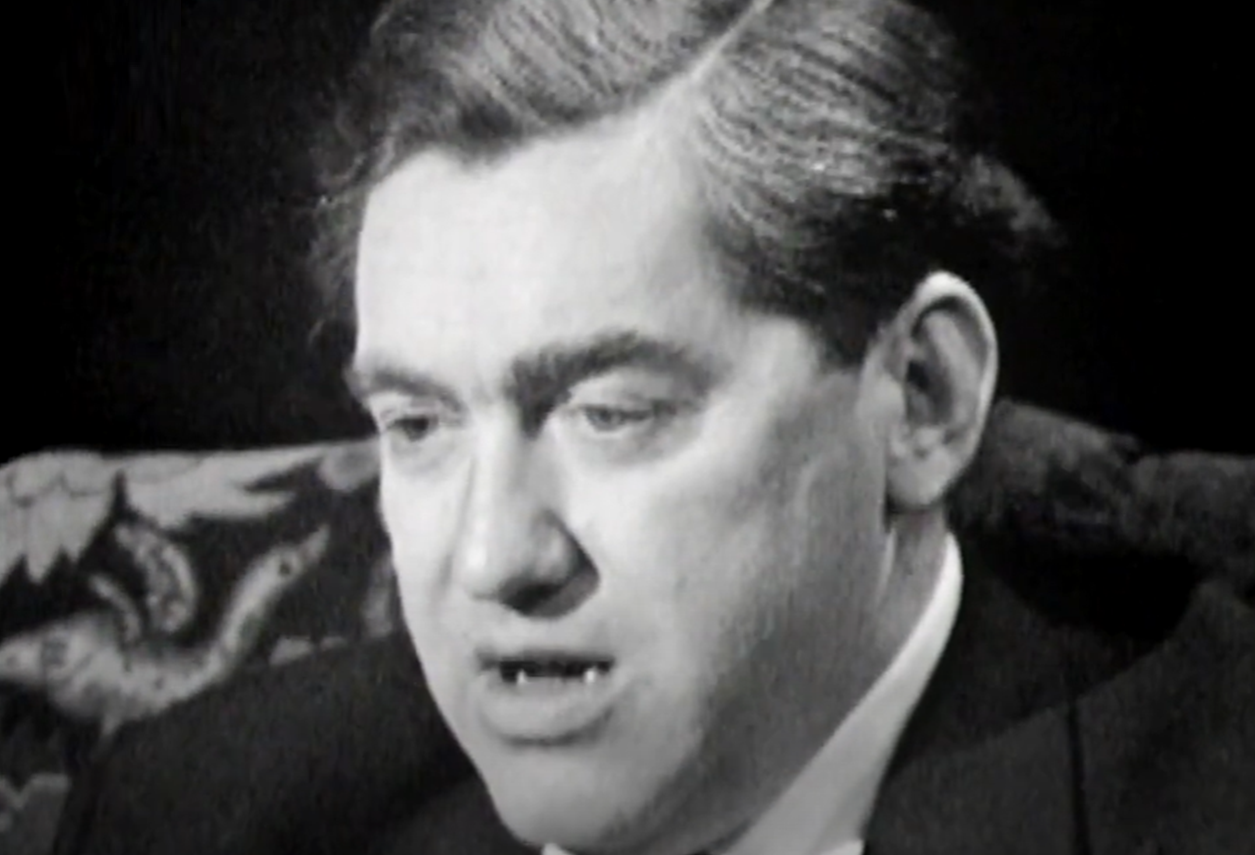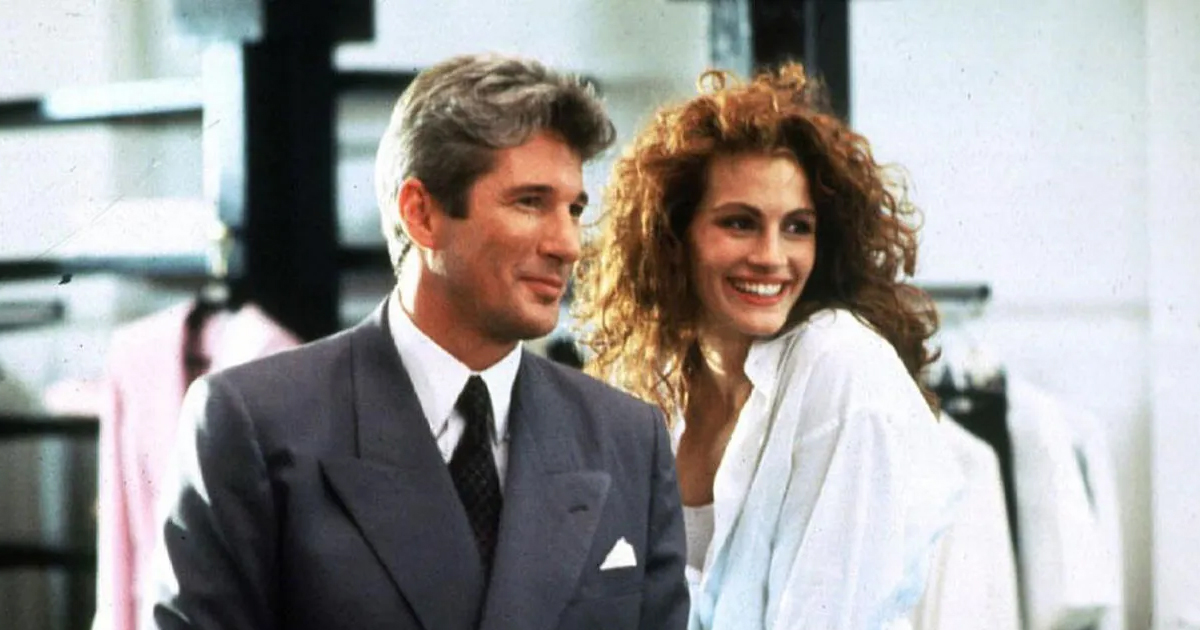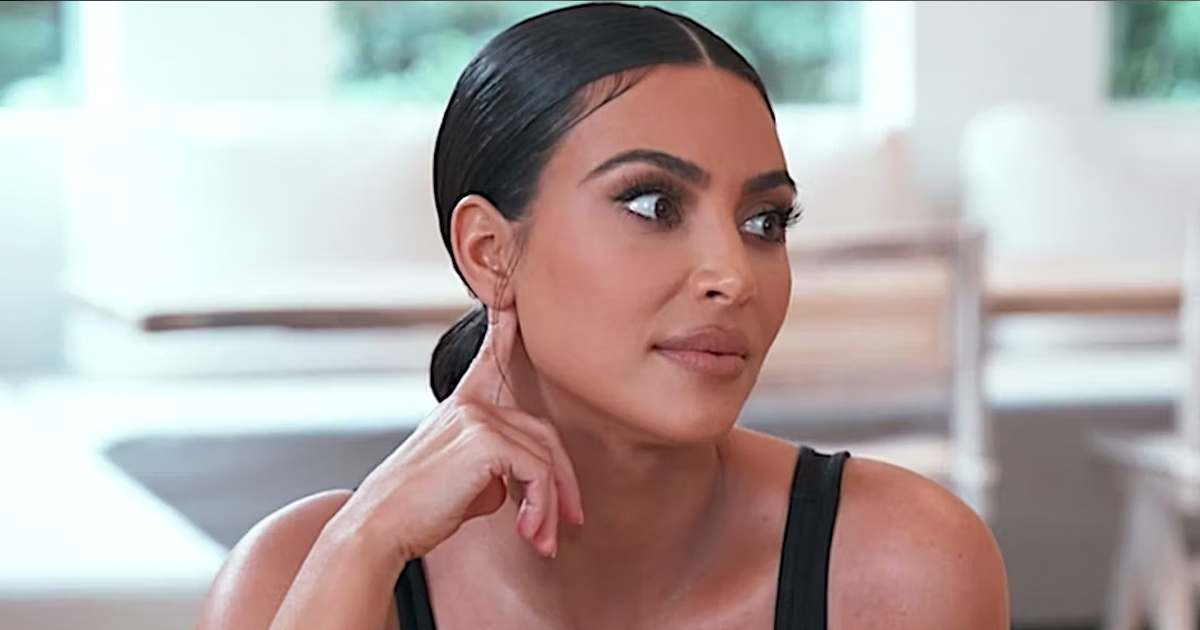Hiding Behind The Laughter
Tony Hancock spent his entire career making people laugh. But when it came to his own life and its shockingly tragic end, it turned out he didn’t have much of anything to laugh about.

1. He Started Young
Growing up in England in the 1920s, Tony Hancock came to his obsession with comedy honestly. By day, his father worked at the Railway Hotel. But by night, he entertained audiences as a comedian. Inspired by his father and another English comedian, Max Miller, Hancock hoped for his moment in the spotlight—that is, until an unexpected tragedy.
 Silver Screen Collection, Getty Images
Silver Screen Collection, Getty Images
2. He Lost His Hero
Hancock’s father passed suddenly in 1934. Just 10 years old at the time, he and his brothers went to live with their mother and stepfather. Even more tragedy lurked, though. He lost a brother shortly after his father, finding himself mired in double amounts of grief. Even so, he tried to take a traditional route forward, but ultimately failed.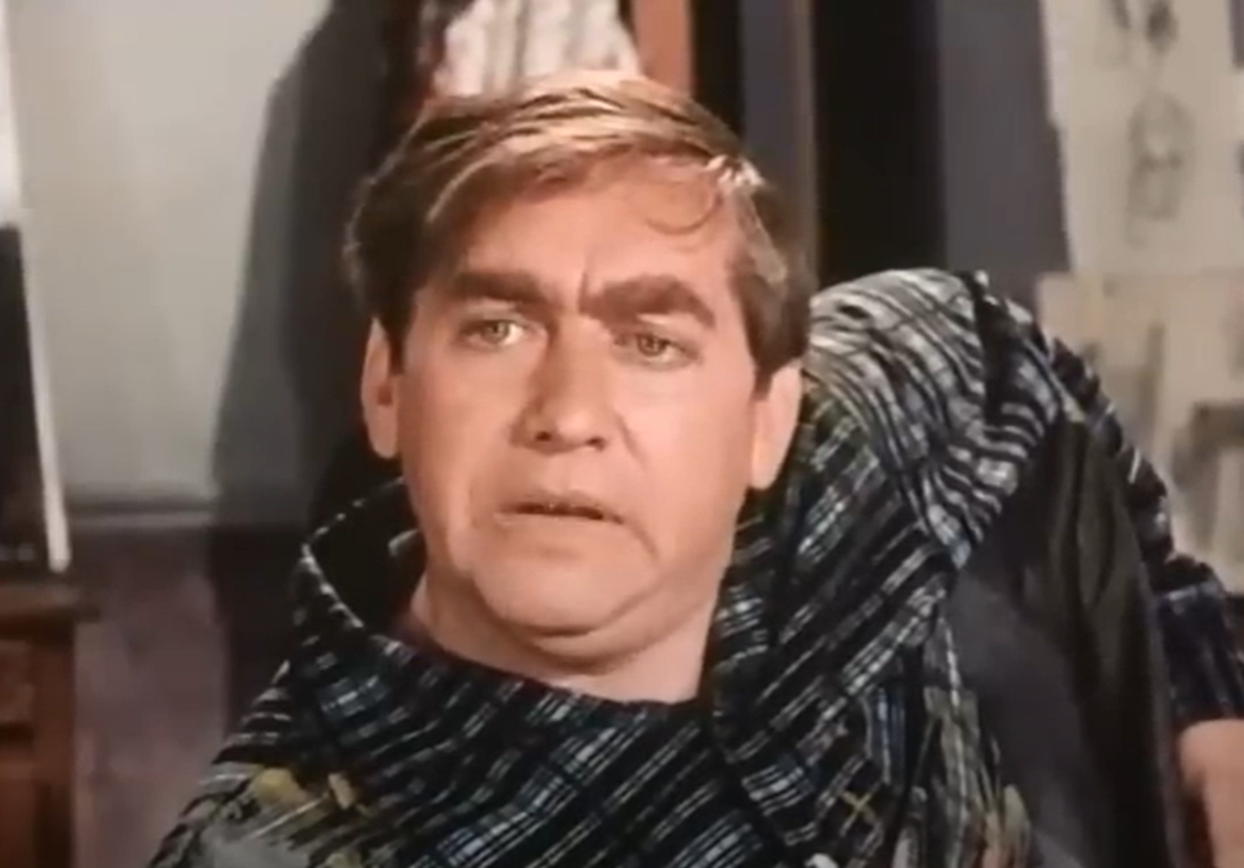 ABPC, The Rebel (1961)
ABPC, The Rebel (1961)
3. He Couldn’t Cut It
Despite all the struggles, Hancock managed to finish his secondary schooling and head off to pursue a degree at Bradfield College. It didn’t last long, though. He gave up on school by 15 years old and turned his attention to other pursuits. But unfortunately for him, the life of his dreams danced just out of his reach.
 ABPC, The Punch and Judy Man (1963)
ABPC, The Punch and Judy Man (1963)
4. He Got Sidetracked
WWII raged on during Hancock's adolescence. Like many young men in Britain, he went to fight when he came of age, enlisting in the RAF. Though not his first choice, this did provide an opportunity for him to break into what he really wanted to do with his life: perform. But life wasn't done tormenting Tony Hancock.
5. He Flopped
The Entertainments National Service Association served the country by entertaining soldiers out in the field. This was Hancock’s chance. He auditioned for the group—but he fell flat on his face, and they turned him away. But he didn't just give up after a few failed auditions. Hancock was determined to stick with it until he got what he wanted.
Good thing, too, because someone special picked him up just in the nick of time.
 BBC, Hancock's Half Hour (1956–1960)
BBC, Hancock's Half Hour (1956–1960)
6. He Got Discovered
Shortly after failing to join ENSA, a well-known theater producer named Ralph Reader gave our struggling performer another chance. The producer cast Hancock in his popular production, the Ralph Reader Gang Show, and the first time he actually started to make a name for himself.
It felt like luck was finally going Hancock's way. But life was about to knock him right back down again.
 BBC, Hancock's Half Hour (1956–1960)
BBC, Hancock's Half Hour (1956–1960)
7. He Hit Rock Bottom
After the fighting stopped, so did Hancock's job entertaining the troops. He struggled to find a new way to make ends meet, and he quickly found himself in the bread line looking for handouts just so he wouldn't go hungry. But even at what felt like rock bottom, Hancock didn’t forget his dreams.
He turned his attention back to his passions. But as if Hancock was cursed, things were only going worse before they got better.
8. He Experimented
In his early days, Hancock would perform in front of anyone, taking gigs wherever he could find them, no matter how humiliating. But even with this crash course, it took him time to settle into his own style of comedy. His early performances were nothing like the persona that he eventually developing.
One very divine venue played a role creating the Tony Hancock character the world would come to love.
9. He Got Shut Down
Hancock learned his lesson about the profane material he included in his set after performing an obscene comedy routine at a church in his hometown. The pastor told him off, and he vowed to omit that type of comedy from that day forward. Judging by what happened next, that critique turned out to be the greatest blessing in disguise.
 ABPC, The Punch and Judy Man (1963)
ABPC, The Punch and Judy Man (1963)
10. He Hit His Stride
By the mid 1940s, Hancock had worked his way up to become resident comedian at the critically acclaimed London's Windmill Theatre. From there, he struck gold with spots on several different radio dramas. Reporters called the Windmill's new comedian “brilliant,” and Tony Hancock was suddenly a name worth knowing.
Not surprisingly, his personal life started to look up too, especially in the romance department…
 Willem van de Poll, Wikimedia Commons
Willem van de Poll, Wikimedia Commons
11. He Married Up
When you have a fiery romance, you tend to get burned. Sometime in 1950, Hancock made acquaintance with a gorgeous luxury model named Cicely Romanis. There’s not much detail of their time dating, other than the fact they seemed to be in a hurry.
The two married shortly after meeting—right around the time Hancock's career was about to explode.
12. He Went Hollywood (Kind Of)
Now several years deep into his comedic career, Hancock landed his first onscreen role in 1951. He appeared on several episodes of BBC’s Kaleidoscope. He delighted production so much that talks of his own show started floating around. Better yet, it didn’t take too long before those rumors grew into a full fledged career…
 BBC, Hancock's Half Hour (1956–1960)
BBC, Hancock's Half Hour (1956–1960)
13. He Hit It Big
Hancock’s own show, Hancock’s Half Hour, hit the radio waves in 1954, making the jump to television after two years. on the show, Hancock played a role that seemed inspired by his actual life: A down-on-his-luck comedian struggling to find his way to the top.
Audiences thought it was a funny bit, because Hancock obviously wasn't struggling. His fans didn't see the darkness that lay hidden under the surface.
 BBC, Hancock's Half Hour (1956–1960)
BBC, Hancock's Half Hour (1956–1960)
14. He Did It First
Hancock’s Half Hour had a radical format that was completely unlike the other comedy programs on television: It was a sitcom, and audiences ate it up. The show flew up the charts across England, soon making Hancock the highest-paid TV performer in England.
His dreams had finally come true. Behind the scenes, however, life looked a lot more complicated.
 BBC, Hancock's Half Hour (1956–1960)
BBC, Hancock's Half Hour (1956–1960)
15. He Messed Around
A few years before starting Hancock’s Half Hour, Hancock welcomed a new publicist to his team, Freddie Ross. But this wasn't a usual hire. While the details of their situation are not public knowledge, he reportedly began an affair with her shortly thereafter.
The proof eventually came in the pudding—but his volatile romantic life was just one of his demons.
 ABPC, The Punch and Judy Man (1963)
ABPC, The Punch and Judy Man (1963)
16. He Struggled With Fame
Despite Hancock's lifelong dreams of working in entertainment, fame was not all he dreamed it would be. He seemingly hated being recognized when out and about. Luckily for him, the people in the neighborhood he lived in with his wife indulged him, pretending they didn’t recognize him on the streets.
But it wasn't enough.
17. Life Scared Him
Hancock suffered with serious anxiety. He reportedly got extremely nervous before performances, and thus came across as difficult to work with on set. Later in life, he admitted to struggling with severe stage fright. But as a younger man, he couldn't bring himself to say it. So instead, he spun a web of lies.
 BBC, Hancock's Half Hour (1956–1960)
BBC, Hancock's Half Hour (1956–1960)
18. He Covered The Truth
Once, Harry Secombe unceremoniously replaced Hancock for a run of episodes. When pushed for an explanation, the show just said that Hancock was on holiday. It was only years later that the truth came out: The comedian's mental state had deteriorated so much that he admitted himself to the hospital.
He needed some huge changes in order to return to work.
19. They Made It Work
Up to that point, Hancock never really made his mental health struggles public knowledge. And with as much money as he brought in, production was willing to make adjustments to cater to him. In an attempt to appease their star, the studio shifted to pre-recording, something no other show on British TV was doing.
Switching to pre-taped shows helped—but Hancock still found anchors dragging him down.
 BBC, Hancock's Half Hour (1956–1960)
BBC, Hancock's Half Hour (1956–1960)
20. He Had A Wingman
British comedian and actor Sid James appeared very regularly on Hancock’s show. While several other well known actors did as well, James quickly became the standout of the cast. He did so well that production eventually whittled the main cast down to just the two men—James and Hancock.
But there wasn't room for two stars on one show.
21. He Wanted It All
Hancock grew bitter about sharing the spotlight with James. As the show came down to just the two of them, he worried people would think of it as two-man show instead of his show, featuring Sid James. This didn’t sit right with Hancock—and he took the passive aggressive route.
He complained to everyone at the show, except for James himself. Poor James never stood a chance.
 ABPC, The Punch and Judy Man (1963)
ABPC, The Punch and Judy Man (1963)
22. He Ditched Him
Without ever talking directly to James, Hancock orchestrated the renaming of the final season of his show to just Hancock, officially giving his co-star the boot. Perhaps the decision turned out to be a good one, as he aired two of his most popular episodes ever in that season. Still, even that didn’t seem to be enough to make him happy.
23. He Got Set Up
Hancocks mental issues came to the forefront in 1960. Reportedly, he enthusiastically agreed to an in depth interview on Face to Face with John Freeman. He admired the interviewer, and felt honored to be on the show. He had no clue what he was in for.
Freeman knew just what soft spots to hit, and like any good interviewer, he hit them with precision…
24. He Got Exposed
Hancock didn’t drop any severely scandalous information on the interview, but he did appear to be extremely self deprecative. Hancock was visibly uncomfortable during the interview, and it seemed like something was wrong with him. Later, his brother would call agreeing to do that interview “the biggest mistake he ever made”.
25. He Cut Them Off
Hancock's co-star wasn’t the only person on the chopping block. As the comedian stepped into this next phase, he slowly turned on everyone who helped him get there. His long-time writers, Galton and Simpson, got the boot next—but Hancock still had to put salt in the wound.
26. It Wasn’t Good Enough
Hancock fired his writers soon after they'd made several attempts to write new scripts for him, so they never got paid for any of the work. They were furious, but Hancock only dug in his heels even more, firing his agent over it too. And in his personal life, things appeared just as unstable.
 BBC, Hancock's Half Hour (1956–1960)
BBC, Hancock's Half Hour (1956–1960)
27. He Went Through The Window
When it rains, it pours. Around this same time, Hancock and his long-suffering wife crashed their car, sending Hancock directly through his windshield. In a rare stroke of luck, at least, he managed to escape with his life and without major visible injury. But the invisible injuries? They didn’t go away so quietly.
28. He Made Lemonade
The incident gave Hancock a concussion that made remembering lines for his next episode, “The Blood Donor,” basically impossible. Accommodating as usual, production brought in a teleprompter so he could deliver his lines. Just one taste, and Hancock was hooked on the prompter. He relied on it from then on.
But as if his life doesn't already sound like a rollercoaster, Hancock still wanted more—desperately.
 ABPC, The Punch and Judy Man (1963)
ABPC, The Punch and Judy Man (1963)
29. He Wanted To Be A Superstar
Hancock was still British Comedy royalty, but it wasn't enough for him. What he really wanted was worldwide fame—particularly in the United States. His chance finally came with a starring role in the film, The Rebel. Unfortunately, things didn’t go as he hoped.
30. He Wasn’t Good Enough
While The Rebel did well in England, the film ultimately flopped in the US. In hindsight, it never stood a chance: Since there was already an American TV show called The Rebel, the studio retitled the movie Call Me Genius. For Hancock, though, that seemed beside the point. He felt like a failure again.
And while he kept trying, the lines between reality and performance started to blur.
31. The Cracks Started to Show
Hancock kept trying with film, starring in The Punch and Judy Man in 1963. In this film, he seemed even closer to the main character, playing an entertainer with hopes of major stardom and a wife he doesn't always get along with. Yet again, the movie flopped.
But even worse, it ended up attracting attention to Hancock’s bad choices.
32. His Chickens Came Home To Roost
Critics called The Punch and Judy Man the “film Hancock did after sacking his writers which no one really likes”. We can only imagine the shattering impact of a comment like that on Hancock’s already feeble psyche. He took a break from film and decided to try to make his way back to TV. That didn’t bode too well either.
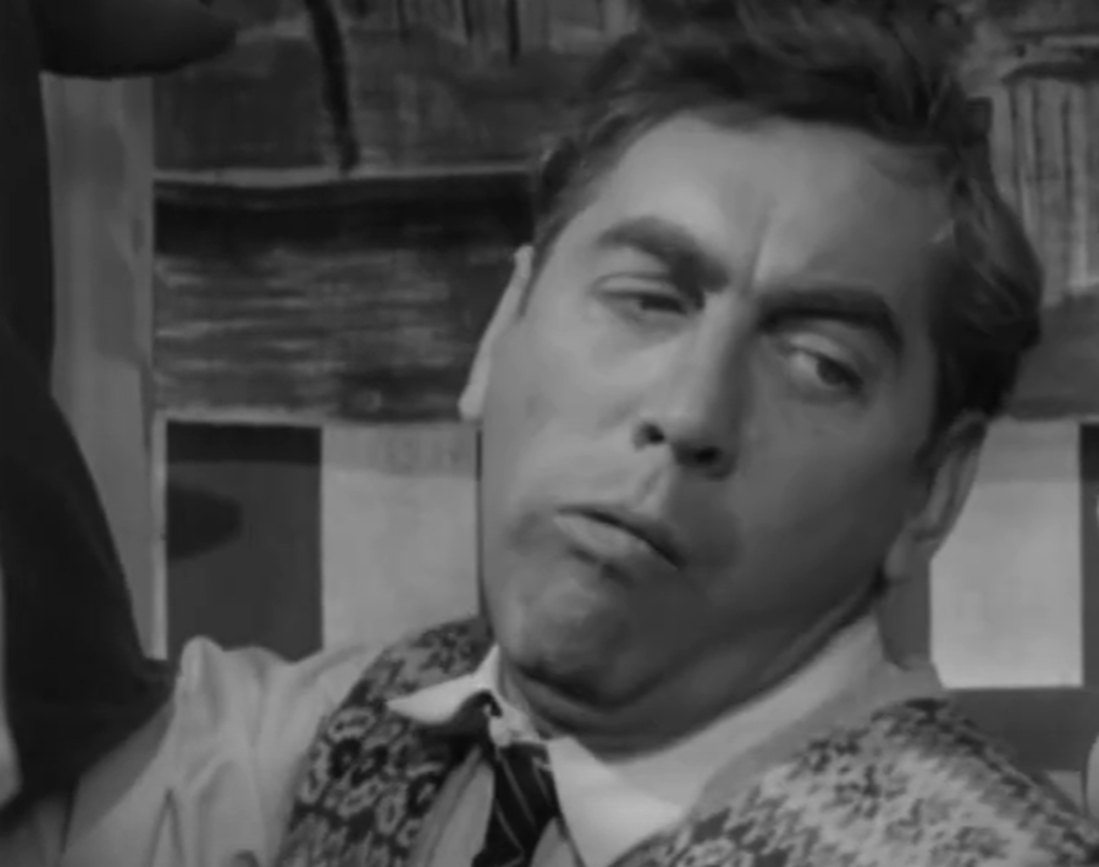 ABPC, The Punch and Judy Man (1963)
ABPC, The Punch and Judy Man (1963)
33. He Kept Trying
Perhaps in an attempt to recoup his former success, Hancock went back to television, working out a deal with a new television network. However, life without the writers he fired several years prior turned out to be a serious challenge. He struggled to find new writers who could even meet deadlines. And when he did? They still didn’t give him enough.
34. He Couldn’t Compete
Eventually, Hancock found writers he felt he could work with, and his new show premiered on ATV soon after. Meanwhile, a show written by his ex-writers, Steptoe and Son, played on the same night. If you didn’t already guess, his ex-writers’ show blew his entirely out of the water with critics.
With his television career waning, Hancock moved into a far less star studded space.
35. He Went Commercial
By the mid 1960s, Hancock was forced to stoop to television commercials. He secured various spots in ad, but as if it wasn't already humiliating enough, he struggled to even get paid the money he was owed—a far cry from the highest-paid comedian on TV. Things in his personal life were in shambles too.
36. He Made A Move
All the evidence of Hancock’s affair came to light in 1965 when he divorced his wife and married Freddie Ross, still his publicist, very shortly after. While scandalous, it didn't seem too bad, as Hancock and Ross had been in a relationship for years. But it turns out, an affair and a marriage are very different things.
 Evening Standard, Getty Images
Evening Standard, Getty Images
37. He Was A Cheater
Hancock was willing to cheat on his first wife with Ross for several years—did she think he'd treat her any differently? Either way, it didn’t sit well with her when she found out that he continued to date outside of their relationship even after the wedding. Even more disturbing is the woman he decided to cheat with…
 ABPC, The Punch and Judy Man (1963)
ABPC, The Punch and Judy Man (1963)
38. He Was A Bad Friend
During his second marriage, Hancock took up with an actress named Joan Le Mesurier. The kicker? She herself was married to John Le Mesurieur, Hancock’s supposed very close friend. Any friend might consider this the deepest form of betrayal possible. But Le Mesuirer’s reaction was not what you'd expect.
39. He Didn’t Mind
According to Joan, her husband not only found out about her steamy affair with Hancock—hee understood the attraction and thought it made sense. All things considered, this could be Joan’s own version of the truth. But however you look at it, this affair was just the tip of the iceberg.
 Unknown Author, Wikimedia Commons
Unknown Author, Wikimedia Commons
40. He Had His Secrets
Hancock's former co-star and rival Sid James claimed the comic secretly harbored romantic feelings for men. Considering the taboo on homosexuality at the time, it wouldn't be too surprising—and one very public incident certainly fanned the flames.
 BBC, Hancock's Half Hour (1956–1960)
BBC, Hancock's Half Hour (1956–1960)
41. He Couldn’t Control Himself
Hancock allegedly came on to actor Matt Monro on a train—but if he'd read any signals, he was sorely mistaken. The very-straight Monro reportedly knocked him unconscious.
 Capitol Records, Wikimedia Commons
Capitol Records, Wikimedia Commons
42. He Had A Problem
Over his decades of work in entertainment, Hancock developed a serious issue with alcohol. By the late 1960s, his issues with this vice in particular began to spell the end of his long career. He could barely find any work—and when he did, it turned into a disaster.
 ABPC, The Punch and Judy Man (1963)
ABPC, The Punch and Judy Man (1963)
43. He Couldn’t Bounce Back
Hancock managed to secure a couple more spots on television, but failed spectacularly at both. He even resorted to trying another film, this time with American studio Disney in The Adventures of Bullwhip Griffin, but they quickly fired him because he couldn't remember his lines.
This was right around the time his drinking finally caught up with him.
 BBC, Hancock's Half Hour (1956–1960)
BBC, Hancock's Half Hour (1956–1960)
44. He Fell Apart
In 1967, Hancock, barely able to stand from the drink, suffered a terrible fall. He ended up in the hospital with a broken rib—but that's when doctors made a disturbing discovery. Hancock's health was far worse than anyone realized.
Doctors predicted he wouldn't last three years if he kept drinking. He was maybe the most vulnerable he'd ever been—right around the time his wife was ready to give up.
45. She Gave Up
Just a year prior to his fall, Freddie Ross, Hancock’s longtime mistress and second wife, attempted to take her own life. She survived, and eventually went on to a very long and successful career. However, the attempt seemed to indicate that life behind the scenes with Hancock felt unbearable.
Maybe that explains her resolve once she recuperated from her attempt.
 Evening Standard, Getty Images
Evening Standard, Getty Images
46. She Moved On
Ross filed for divorce not long after, and it’s hard to blame her. She'd dealt with Hancock's infidelity, anxiety, substance issues, and obsession with his career for years. No surprise she couldn't take it anymore. The news of the divorce, however, came at a terrible time for Hancock.
47. He Tried One More Time
Hancock headed for Australia to do another television series in 1968. Production planned to film in color, which would serve as a first for him. Ultimately, though, he only managed to film three of thirteen promised episodes before the world caved in on him.
Some report that his final descent began when he received the news of his impending divorce.
48. He Took It Hard
Reportedly, Hancock found out his wife filed for divorce while on this trip, and he took it terribly. He spiraled into despair, finding it just about impossible to continue his work on the television series. Finally, he couldn’t take it anymore. Someone found his body on a summer day in 1968, with a note that left his fans in shock.
 ABPC, The Punch and Judy Man (1963)
ABPC, The Punch and Judy Man (1963)
49. He Ended It
Hancock took his own life with a combination of vodka and pills. In his final letter, he reasoned that “things just seemed to go too wrong too many times”. His family cremated him, and his ashes remain buried in London. While his success is undeniable, it never seemed enough for him. He just couldn’t live with what he deemed his own failure.
50. His Story Continued
While his physical life on earth ended, his legacy and impact continued long after. Several comedians still considered him an inspiration for their own careers. His life itself serves as a source of intrigue, and eventually incited a successful 1991 film entitled Hancock. If only he’d lived long enough to enjoy his own legacy.












